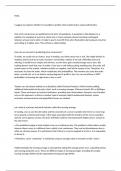Hello,
I suggest we explore whether it's possible to predict stock market prices using mathematics.
First of all, stock prices are published in the form of quotations. A quotation is the display (on a
website, for example) of a price at which one or more company shares have been exchanged
between a buyer and a seller. A trader's goal is to profit from price fluctuations by buying at one price
and selling at a higher price. This activity is called trading.
How can we succeed in predicting price movements?
To trade, we could rely on chance, since in trading, you either press buy or sell. One might believe in
intuition and let luck do its work, but that's not feasible. Indeed, if we had a fifty-fifty chance of
winning, it would be too simple and risk-free, as over time, gains would average out to zero. But
trading doesn't work that way. In reality, if you buy or sell without doing anything else, the order will
remain open on the market, whether positive or negative, until all the money is lost. Therefore, it is
necessary to close the order, which complicates the probabilities. The moment you close the order
plays a crucial role, as it can lead to varying degrees of profit or loss. So, can we achieve a 100%
probability of choosing the right time to buy or sell?
Traders can rely almost entirely on a discipline called Technical Analysis, which involves adding
additional information to the price chart, such as moving averages, Fibonacci bands, RSI, or Bollinger
bands. These are known as technical indicators, providing extra information. However, not all traders
rely on this approach, as there is another type of analysis called Fundamental Analysis, where
economic announcements and geopolitical issues are studied.
Let's look at a primary technical indicator called the moving average.
In trading, we can use the derivative and the convexity of a curve to predict short-term or even long-
term upward or downward trends. If the slope associated with the function of the curve is positive
and the curve appears convex, the price will likely continue moving towards higher prices, at least in
the short term.
• You probably imagine a stock market curve as a continuous line. The problem is that traders usually
observe these curves in a different form, which is not continuous. They can be discontinuous due to
what we call price jumps. It is well known that if there is no price assigned at a time t, it is impossible
to derive it.
• Therefore, some "continuity" is needed by using an average value to smooth out this "noise."
Mathematically, the moving average is calculated by taking the average prices over a specified period
and moving along the curve. There are different types of moving averages, including the simple
moving average (SMA) and the exponential moving average (EMA).




